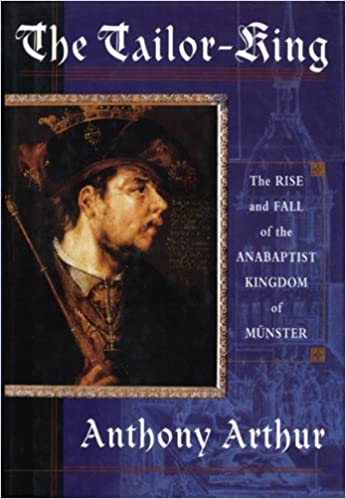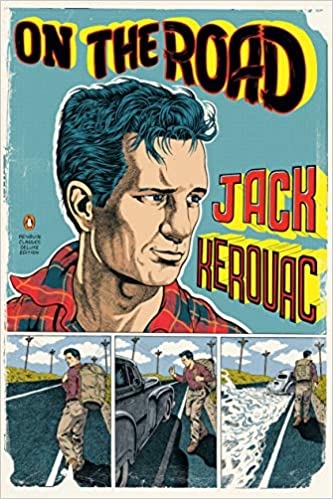Everything You Wanted to Know about Bohemianism
But were afraid you'd get an erection

Shepherd Andre Ciceron said Mass naked.
He couldn't actually say Mass because he was not a priest, but he mimicked it, asserting his nudity invoked demonic powers which allowed him to create a magical compound from the bread and wine. Caught and tried by the Inquisition in 1335, he pled that he merely acted in imitation of the first father, Adam, who also said Mass naked (the obvious chronological problem apparently never occurred to Andre). Jeffrey Burton Russell, Witchcraft in the Middle Ages (Cornell Univ. Press, 1972), 181
The next century, a curious crew of heretics known as Adamites cropped-up in Bohemia, holding beliefs similar to Andre's.
Embracing a metaphysical error known as pneumatic antinomianism which asserts that the body is evil and the spirit good, they despised the body as an inferior, if not non-existent, phenomenon that could be used and abused without effect on the soul. They scorned the Bible and any creed, instead merely embracing the words, “Our Father who art in us, illumine us, thy will be done.” They walked about naked and engaged freely in sexual activity.
Fiercely militant and uncompromisingly insisting on the superiority of their doctrine, the Adamites taught that the world must run with blood in a holy war in service to their beliefs. They invaded villages at night, seizing possessions, setting fire to structures, and killing people (including children) – apparently with equanimity, using their status as little gods to justify every action.
The Hussite general John Zizka suppressed this nudity-loving group, killing all of them, except one, whom he temporarily spared in order to gather a full account of the cult's beliefs. (Norman Cohn, The Pursuit of the Millennium (Oxford Univ. Press, 1970), 219-221. See also Jeffrey Burton Russell, Witchcraft in the Middle Ages, 224-225; Russell, Dissent and Order in the Middle Ages (Twayne Publishers, 1992), 96.)
Bohemianism in the Middle Ages
Other dangerous or perverse unconventional groups also arose and were also put down between the eleventh and sixteenth centuries. Cathars, Alumbrados, Brethren of the Free Spirit, and witch cults disrupted society, but without lasting effect.
Some were suppressed militarily. Others floundered, like groups in the twelfth and thirteenth century who taught heretical forms of poverty but couldn't establish themselves next to the spiritual superiority of St. Dominic and St. Francis and their orders (a similar thing occurred in seventeenth-century England, when the Ranters faded away, unable to gain a solid footing next to George Fox and the early Quakers).

The most famous unconventional movement took place in the walled German town of Munster.
In the early sixteenth century, militant Anabaptists took over Munster and forced unconventional lifestyles on all its inhabitants. Community property was mandatory. Anabaptism was declared the official religion of the city, and all non-Anabaptist marriages were nullified. Men were forced to take more than one wife, including the lawful wives of Catholic and Lutheran husbands who were cut off from the city (though some wives chose to die instead of being unfaithful). Because a man's multiple wives often failed to get along, divorce became common, resulting in an atmosphere similar to free love. Cohn, 270
All this happened under the leadership of John of Leydon, who taught a pneumatic antinomian hatred of body and love of spirit like the Adamites, who lived sumptuously and promiscuously – assuring subjects that, being wholly dead to the world and the flesh, he wasn't enjoying any of it. (Cohn, 273) He eventually instituted a reign of terror and incited Anabaptist uprisings in other communities.
Every German state recognized the evil, donated arms or money, cut supply-lines to Munster, and reduced the Munster inhabitants to cannibalism and grass-eating, finally overcoming it and crumbling its walls so it could never be a center of resistance again.
The Protestant Reformation
The sixteenth century also experienced the Reformation, a full-blown real revolution, the size and success of which the Bohemian Adamites could have only dreamed about.
But it was a revolution with an attitude generally opposite that of heretics like the Adamites.
For the most part, the Protestant leaders were stern men with little use for fanciful novelty. And they would suppress it ruthlessly – as peasant followers of apocalyptic revolutionary Thomas Muntzer would learn when Lutheran princes, at the urging of Martin Luther, crushed a revolting peasant army in May 1525 near Muhlhausen (killing over 5,000 peasant warriors at a loss of only 6 soldiers).
Although the Reformation's leaders were not novel men, the Reformation was hugely disruptive to society. Its wake, the Enlightenment, brought the Reformation's systemic, attitudinal changes from the religious sphere of society to every other – political, social, economical.
The unconventional during the next centuries – the seventeenth through early twentieth – embraced antinomian behavior, but not on pneumatic grounds. The unconventional instead reflected the cutting-edge currents of its day – skepticism, solipsism, and relativism – and relied on straightforward atheistic, or effectively-atheistic, beliefs to justify brazen immorality, like members of the literary group known as the Bloomsbury Group in England who reveled in strings of mistresses and/or webs of homosexual affairs.
For the sexually aggressive who also wanted some religion in their lives, demonic antinomian behavior was also available. The nineteenth-century Decadents, for instance, sponsored black masses, which featured desecration of consecrated hosts, drugs, homosexual rites, at least one baby sacrifice, and other ugly rites. Another group, the Hellfire Club, held orgies and mocking diabolic rituals in the caves around Buckinghamshire in England. Jeffrey Burton Russell, Mephistopheles (Cornell Univ. Press, 1986), 221-222; 89-91; 146
In general, during these centuries disgusting demon-based antinomians like the Decadents and effectively-atheistic antinomians like Bloomsbury garnered some attention (and prosecution), but no compelling following and pneumatic antinomians were barely noticeable.
But that changed.

The Bohemian Beatniks
In 1957, Jack Kerouac published On the Road, a book based on his real-life meandering. It described a type of lifestyle labeled “beat,” which, according to Catholic-born Kerouac, was a religious word with a relation to the beatific vision. Ann Charters, Introduction to Jack Kerouac, On the Road (Penguin Books, 1991), ix
Though he never provided a coherent explanation of the Beat's religious dimension, it was clear from the book's protagonist, Sal Paradise, and his intense longing for the road and emotional fervor for the novelties of life that the Beat lifestyle required a religious-like devotion and pursuit (albeit an inane and false one, like the contortion of the Adamites and Munster Anabaptists).
On the Road became the koran of the Beatnik generation, the West's newest group of bohemians. Like the Bohemian Adamites, the Beatniks embraced a type of pneumatic antinomianism. Relying heavily on the oneness metaphysics of Buddhism and Hinduism, the beatniks largely believed that each person is divine, with the result that every impulse – and passion and action – is divine, including the beatniks' sexual excesses and drug use as described and celebrated in Kerouac's On the Road.
By this time the dogmas of the dogma-hating Enlightenment had saturated society. Loyalty to tradition, orthodox religion, and authority were only vestiges, sitting on the surface most everywhere but unsupported. New loyalties – freedom, will, love, peace – were jumbled together, cherished but not understood. Systemic, attitudinal changes had grabbed hold everywhere, largely without detection.
So no German princes suppressed this new bohemian movement. No St. Dominic offered a compelling better example. And it rose.
The crest of this movement was the Sixties. It saw nudity; it saw perversity; it saw revolutionary fervor; it saw violence.
The Sixties archetype was a group known as Weatherman. This ultra-bohemian group's lust for sex, drugs, and violence resembled the Bohemian Adamites, and embodied, in most extreme form, all the radicalness of the varied Sixties movements. Collier and Horowitz, The Destructive Generation (Summit Books, 1990), 67 et seq.
Originally a more-radical sub-faction of the Students for a Democratic Society, they splintered from SDS in 1969. Believing that they were a core elite – a self-conscious few with right ideas destined to revolutionize society – its members set about trying to organize race-based revolution and violence, but using the drugs (especially speed and acid) and sex (they were militantly anti-monogamy, frequently orgiastic) that had become common in the earlier “peace and love” movements of the Sixties.
Weatherman's movement climaxed in the Days of Rage in Chicago on October 8, 1969, during which 600 Weathermen, in hopes of triggering a revolution that would topple the American state, burst from Lincoln Park, smashed store windows in the Loop, fought police, set cars on fire, and ravaged Chicago's Gold Coast. The rioting continued for three days, resulting in 300 arrests and 100 injuries.
The revolution did not materialize.
The group broke up, with a core going underground to engage in bombing attacks against America (including bathroom bombings at the Capitol and Pentagon). Its last surge occurred in 1981 when three of its members teamed with members of the Black Liberation Army to attack a Brink's truck in New York, killing three people and wounding two.
Bohemia is us
And then the bohemians faded away and we never saw them again.
Yeah, right.
They won. They won big. They're now us.
On the Road often reads like a normal, albeit somewhat aggressive, recount of young adult life, so much so that the young reader today must constantly remind himself that the stories took place during the 1940s.
Weatherman-like violence is embraced.
Antinomianism? It arguably has become the dominant piece of furniture in our youth's mental room. Every type of sex act, identification, preference, desire, or passion is defended as a matter of course.
Today, bohemianism is seen by some as what it means to be “American.”
One of my favorite jokes involves a friendly rivalry between Dominicans and Jesuits.
The Dominicans are an order of clerics whose primary job initially was to drive back the Cathars.
The Jesuits are an order of clerics whose primary job initially was to drive back the Protestants.
Dominicans like to ask Jesuits these days, “When's the last time you saw a Cathar?”
Therein lies the answer to our current crisis. What order will arise to meet this new form of bohemianism?
